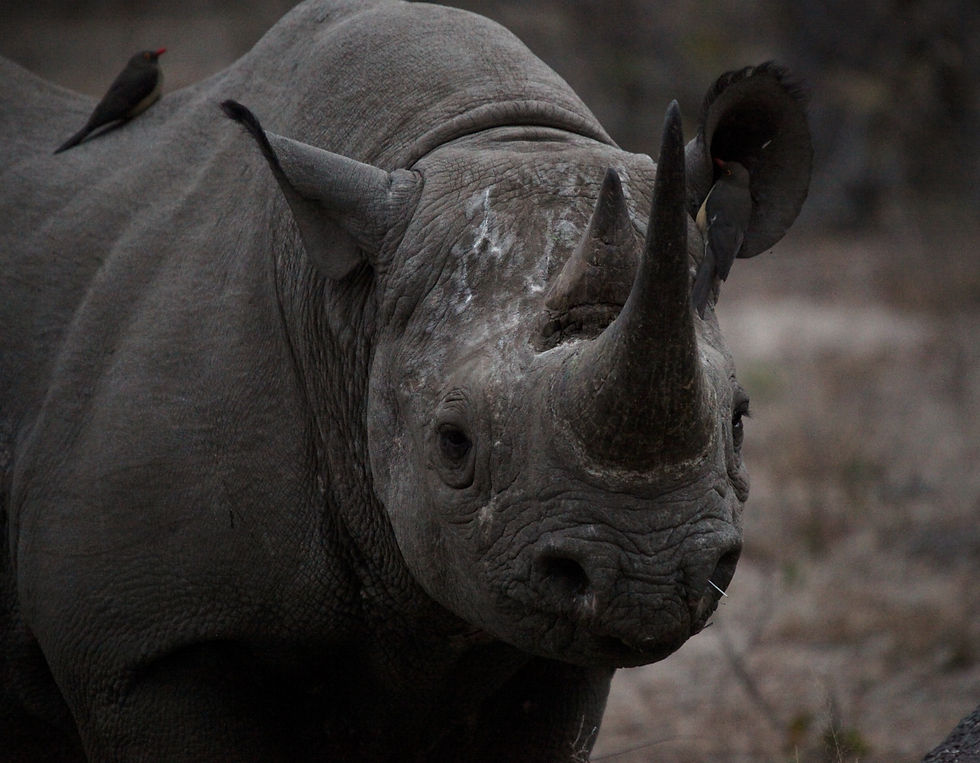The Invasive Species Costing the UK Billions
- Emily Davies
- Nov 30, 2021
- 3 min read
Emily Davies addresses the financial and ecological impacts of non-native plants and animals on British ecosystems.
Photo by Taryn Elliott
According to recently published research on NeoBiota – an online journal that focuses on the workings and consequences of alien species and biological invasions – invasive species of plants and wildlife have cost the British economy increasing amounts since the 1970s.
The research found that trying to retain control of species such as the grey squirrel and Japanese knotweed have cost the UK economy £5 billion since 1976 – at least £122 million on average per year. However, the researchers point out that this is likely a considerable underestimate due to significant gaps in data on invasive species.
The cost is due to structural damage to architecture, blocking waterways and interfering with crops. Additionally, plants and animals not naturally found in Britain are a leading reason for biodiversity loss as they can overwhelm habitats, disrupting habitats and wiping out more vulnerable native species.
Dealing with invasive animal species has cost the most, followed by plants and then fungi. Unsurprisingly, damage costs were higher on land than aquatic environments due to effects on agricultural processes. This article details a few of the species currently disrupting Britain’s ecosystems.
Grey Squirrels
You may wonder how squirrels are disrupting the British ecosystem, but it is essential to distinguish between red and grey squirrels before this is addressed. Red squirrels have been wiped out across the majority of the UK, with only a few population spots remaining, predominantly in Scotland.
The red squirrel is classed as ‘Near Threatened’ in England, Wales and Northern Ireland. A massive reason for their decline in numbers is deforestation, but road traffic and other predators are contributing factors.
However, the leading cause of the species’ decline is the other type of squirrel – the grey. Grey squirrels were introduced in the 1870s as an ornamental species, and since then, the number of red squirrels has dramatically reduce – falling from 3.5 million to between 120,000 and 160,000. In England alone, the number of reds is thought to be around 15,000.
The primary reason for the eclipsing of the diminishing numbers of red squirrels is that when grey squirrels were released into the UK carrying a pox virus to which native reds are vulnerable. Additionally, greys eat green acorns before they ripen, meaning less edible food is available for the red variety.
Japanese Knotweed
One of the more well-known invasive species of plant in the UK is Japanese knotweed. While a functioning part of ecosystems in its native Southeast Asia, in the UK, it is not exposed to any of the organisms that restrict it in its natural habitat. A different climate and a lack of bacteria and fungi local to Southeast Asia have allowed this plant to easily and quickly spread across large areas.
It was introduced to the UK in 1886 by the Victorians as an ornamental garden plant, but is now widespread and difficult to control, and is one of the most persistent invasive plant species in Britain and will be nearly impossible to eliminate entirely.
The plant competes with and overwhelms British plants, thus damaging our ecosystems, reducing species diversity and increasing risks of soil erosion and flooding as it disrupts waterways. Its roots are so persistent they can even damage infrastructure and grow through concrete, adding to the costs involved in controlling the plant.
Racoon Dogs
Despite the name, racoon dogs are not a type of racoon – they more closely resemble foxes and badgers. They have a cute appearance which has led to a high demand as pets, with the dogs being sold for hundreds of pounds online. However, they are also known for their clever talent of being escape artists. The difficulty of keeping them captive along with their rapid breeding worries experts as this species could very quickly become an enormous problem for our ecosystem.
In Finland, a million cubs are born in the wild annually, and the species is responsible for eliminating toads and frogs there as they are a predator to birds and amphibians. There is concern that something similar could happen in the UK if the species is not kept regulated, meaning more potential expense for the government.
The NeoBiota report has emphasised the importance of thorough research of invasive species in order to highlight how interfering with the natural placement of plants and animals is wreaking havoc on our ecosystems, let alone costing us money that could be used on flood defences or installing solar panels instead.
We are a not for profit socio-ethical impact initiative advocating for topics that matter, whilst supporting wider planetary change and acknowledgement. Support our journalism by considering becoming an advocate from just £1.















Comments